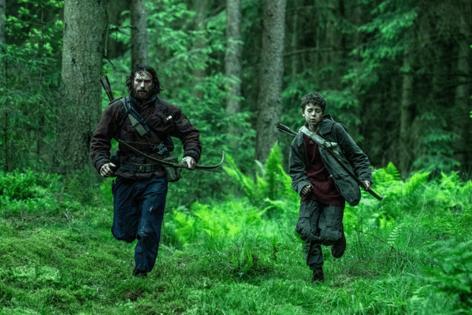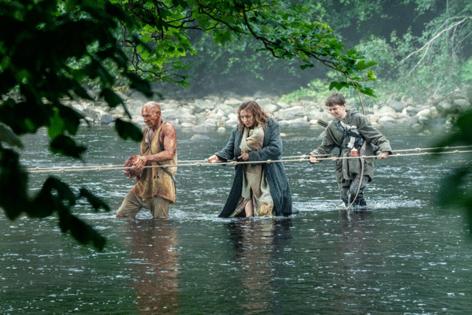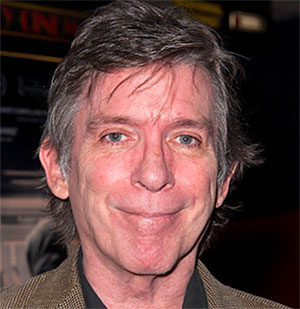Review: Boyle, Garland bring life to zombie genre '28 Years Later'
Published in Entertainment News
Halfway through “28 Years Later,” our young hero, Spike (Alfie Williams) learns a new phrase: “Memento mori,” Latin for “remember death.” In a world bound by death — borders and culture defined by it — one would be hard-pressed to forget. But for Spike, the phrase becomes a lesson that to honor death, even in a circumstance where death, dying and the undead are ubiquitous, is to honor life itself. Funerary rites serve a purpose: to celebrate life while we acknowledge death.
Twenty-three years ago, director Danny Boyle and writer Alex Garland resuscitated the zombie genre with their daring “28 Days Later,” which suggested that zombies could be fast, and imagined the dystopian possibilities of a “rage virus” that could lay waste to an island nation like the United Kingdom. After skipping the sequel “28 Weeks Later,” the pair has returned to the material, once again upending the genre with the central question that animates "Years": How can death have meaning again among the undead? Does giving death significance reestablish humanity where it seems there is none?
These questions start to infect Spike’s brain like a virus during a ritual hunting trip. He and his father Jamie (Aaron Taylor-Johnson) make their way to the British mainland from their isolated village on an island so that Spike can perform his first rite of manhood: killing a zombie. He achieves this by shooting a sluggish, slow creature crawling on the ground eating worms, but he soon learns there’s another kind of undead he will have to learn to contend with, the fast ones, the alphas.
Spike and Jamie’s utopian village has been isolated and protected from harm for decades by a strong rip current and a strict security protocol. But things aren’t perfect there for Spike. His mother, Isla (Jodie Comer) is sick and dying. When he learns that a fire he spies on the mainland might come from a doctor who once lived there, he’s determined to bring her to him for lifesaving treatment, embarking on a coming-of-age journey outside of his culture’s prescribed rituals.
Garland paints a world much bigger than the one that exists on their island, as idyllic as it seems. International soldiers patrol the waters, coming from a Europe that has moved on in the world (Spike has no idea what a “delivery driver” or a smartphone might be, raised in his analog village of collectivism and scavenging). Graffiti referring to someone named “Jimmy” adorns walls and is carved into torsos. There’s the alpha zombies and the slow ones and the fire that might belong to a doctor, who may have survived these 28 long years. It’s all new for sweet Spike, who is overwhelmed by the vastness of it all.
Not that it was ever in question, but “28 Years Later” is an invigorating reminder that Boyle, as a technician of dizzying, daring cinematic style, has never lost his fastball, and he employs it to great effect emphasizing Spike’s visceral emotional experience. The digital cinematography is both grainy and saturated, almost inquisitive in its nature. The camera feels like a tentacle, sensitively responding to every glance and gesture; it makes sense to learn that cinematographer Anthony Dod Mantle shot the film with an arsenal of iPhones (and drones).
When Spike is with his father, learning to hunt, the camera is athletic and bouncy, it pushes and pulls them in and out of perilous situations, the score by Scottish band Young Fathers clashing with industrial noise, blending with the sound design by Johnnie Burn, pulsing with sirens and heavy footfalls. When Spike is with his mother, the camera floats peacefully, a folky melody underneath their journey through fields of wildflowers that are nonetheless lousy with zombies.
Boyle, Garland and the creative team of Mantle, Burn and editor Jon Harris work in the micro and the macro: the sweeping vistas of a shockingly green landscape, and the intimate moments between mother and son. Boyle’s style remains as dynamic as ever, reflecting our character’s subjective experience and journey as he discovers the world beyond the gates where he was raised.
Whoever controls information controls the power (as we see reflected in our own current events), apocalypse or not. Jamie, wanting to keep Spike safe, controls what his son does and does not know, carefully curating his reality. But in his own desire to save one life, Spike refuses to accept that which he does not know. Just when we thought the life had gone out of the zombie movie, Boyle and Garland remind us that the genre is flexible enough to evolve alongside our own reality, and remains one of our most powerful cultural metaphors, and a rich landscape for stylistic experimentation.
———
'28 YEARS LATER'
4 stars (out of 4)
MPA rating: R (for strong bloody violence, grisly images, graphic nudity, language and brief sexuality)
Running time: 1:55
How to watch: In theaters June 20
———
©2025 Tribune Content Agency, LLC
















Comments